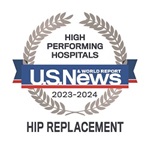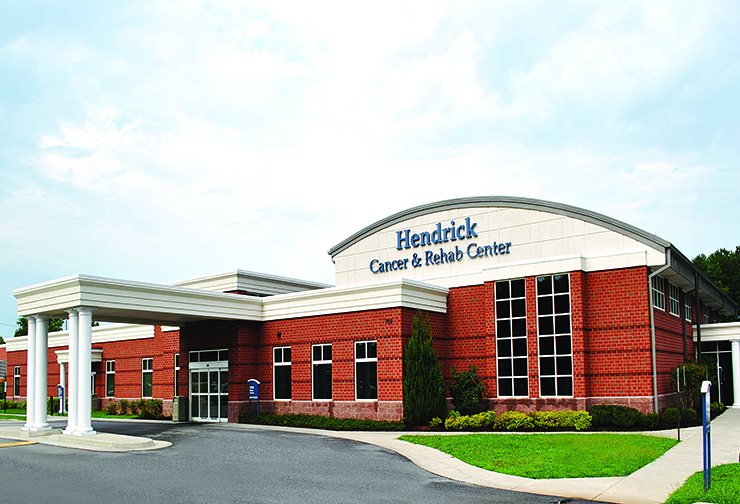Joint Pain Treatment
Whether you want to get back to gardening, walking the dog, or athletic activity, we can help you get better, faster.
The hip and knee joints are two of the most complex in our bodies. Pain from arthritis, injury, or a chronic condition can keep you from doing the activities you love.
Common Orthopaedic Hip and Knee Conditions and Injuries
At our diagnostic center, we combine the expertise of surgeons, radiologists and rheumatologists to pinpoint the cause of your joint pain.
There are several forms of arthritis that affect the hips and knees. The most common is osteoarthritis. Osteoarthritis is the gradual wear and tear of cartilage in the joint. Without cartilage, the bones can rub together and cause pain and discomfort. Risk factors include age, weight, injuries to the area, and high impact activities. With arthritis, you may feel pain, swelling and stiffness in the joint. There isn’t a cure for osteoarthritis, but there are ways to relieve pain and increase your quality of life.
Like all joints, the hip can dislocate. It normally takes a lot of force, such as an accident or traumatic injury. Knee dislocations are more common. Knees can dislocate in two ways: the kneecap, or patella, can dislocate, or the thighbone and shinbone can dislocate from where they connect at the knee. Commons symptoms for both areas are the inability to walk, hearing a “pop” or the joint being visibly out of place.
Femoroacetabular Impingement (FAI), or hip impingement, is a condition in which extra bone grows around the hip joint. This can cause the ball and socket to rub against each other during movement, causing pain. FAI occurs when the hip joint does not form properly in childhood. Limping, stiffness and pain are common symptoms.
Hip fractures are usually a result from an injury or fall. Because our bones weaken with age, hip fractures are most common in older adults. Knee fractures, however, can happen to anyone and result from trauma to the area. Swelling, inability to bear weight and pain are common symptoms in fractures in both the hip and knee.
An acetabular labral tear is when cartilage in the socket of the hip joint is damaged. This can happen gradually over time or can result from a sports related injury or accident. Feeling as though your leg is locking up or “catching” in the hip can be symptoms. Sharp pain around your groin and pain when rotating your leg can also occur with acetabular labral tears.
Hip Dysplasia is a condition in which the hip socket doesn’t fully cover the ball portion of the joint. This causes the hip joint to partially or fully dislocate. Hip dysplasia is often hereditary and occurs at birth. Later in life, it can cause osteoarthritis and acetabular labral tears. Hip dysplasia can cause pain with daily activities or limit athletic type activities.
For ACL or meniscus tears, please visit Sports Medicine.
Common Orthopaedic Hip and Knee Treatments

If surgery is eventually required, we offer joint preservation surgeries. Some less invasive options are osteotomy, osteochondral grafting and partial joint replacement. Arthroscopically assisted surgeries are also an option and are associated with faster recovery. Through our active research programs we stay abreast of all the advances in joint care.
- Anti-inflammatory medications- Over the counter anti-inflammatory medications (sometimes called NSAIDs) such ibuprofen (Advil, Motrin) and naproxen (Aleve) can help alleviate pain in the hip and knee. Diclofenac (Voltaren) gel is a topical anti-inflammatory that is often recommended. Prescription NSAIDs are also frequently prescribed. Note that acetaminophen (Tylenol) is not an anti-inflammatory medication. It can help relieve pain but doesn’t contain any anti-inflammatory properties.
- Braces- Braces are removable devices used to stabilize and minimize movement in an area. They are commonly used to relieve symptoms of arthritis and to stabilize an area after surgery.
- Injections
- Cortisone injections- Steroid injections, or cortisone injections, are a treatment used to reduce inflammation in an area, which often results in less pain. Injections help manage pain from arthritis.
- Viscosupplementation injection- Viscosupplementation injections use a thicker, gel-like hyaluronic acid into your joint. These are a good option if cortisone injections don’t provide pain relief.
- Nutraceuticals- A nutraceutical is a supplement that provides a health benefit. Some nutraceuticals are thought to help with pain management and arthritis. Your provider can help you determine what might work for you and to make sure it won’t interact with any other medication you may be taking.
- Physical Therapy- Physical therapy may be prescribed to relieve hip or knee pain or can be used to strengthen the joints after surgery. This includes working with a qualified physical therapist on various stretches and exercises to increase flexibility and strength.
- Arthroscopic surgery- Arthroscopic surgery allows surgeons to make small incisions by using very thin equipment and cameras. Arthroscopic surgery can be used to repair cartilage tears, bone spurs, and other conditions.
- Direct anterior hip replacement- Direct anterior hip replacement is considered a muscle sparing type of total hip replacement surgery. With direct anterior hip replacement, the hip joint is accessed by going between, rather than through muscles, and this can lead to a quicker recovery. The direct anterior approach has quickly become one of the most popular ways to perform a hip replacement in the United States.
- Hip preservation- Hip or knee preservation is a type of surgery that delays or prevents eventual arthritis or total joint replacement. Hip preservation is often used to treat hip dysplasia, acetabular labral tears and FAI.
- Partial joint replacement- Partial hip or knee replacement is a surgical option when only part of the joint needs to be replaced. In hips, only the ball part of the joint is replaced and is sometimes indicated following a hip fracture. Partial knee replacements may be recommended when arthritis only affects part of the knee. In both cases, the damaged bone and tissue are removed and replaced with an artificial implant, or prosthetic.
- Periacetabular Osteotomy (PAO)- PAO surgery is a treatment option for hip dysplasia that involves reorienting the hip socket to improve dysplasia. PAO surgery is a common recommendation for patients who don’t yet have advanced arthritis.
- Revision hip or knee replacement- Although total joint replacements are extremely effective, they can sometimes wear out over time and cause dislocation, loosening, fracture or infection in the hip or knee. In this procedure, the original replaced components will be either totally or partially removed and replaced again.
- Total joint replacement- Total hip or knee replacements are recommended when severe joint pain is not improving with other nonsurgical options. In total joint replacements, the damaged bone and cartilage is removed and replaced with a prosthetic material. The prosthetic joint can lead to decreased pain, increased activity level and quality of life improvements.
Learn more about total joint replacement surgery
Learn more about the causes of your hip and knee pain, surgery, recovery and why VCU Health Orthopaedics is the right choice for your hip or knee replacement surgery.
Download our Total Joint Replacement Center guide.
Register to watch our free video seminar, "The painful injured hip and knee: What are your options?"
VCU Health Orthopaedic Surgeon, Dr. Jeremy Ross explains if hip replacement is right for you.
Meet Our Team
Laura A Giambra, PA-C
OrthopaedicsGregory J Golladay, MD
OrthopaedicsJoint Reconstruction
Niraj V Kalore, MD
OrthopaedicsStephen L Kates, MD
OrthopaedicsDaniel Layon, MD
OrthopaedicsJoint Reconstruction











